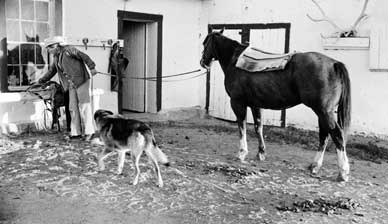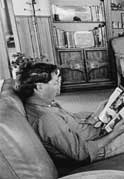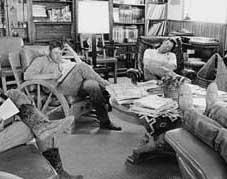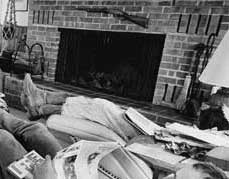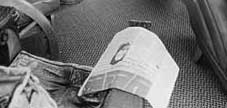|
|
|
| Subscriptions click here for 20% off! | E-Mail: info@rangemagazine.com |
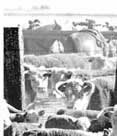 |
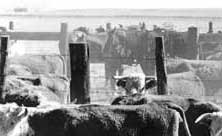 |
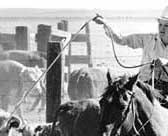 |
 |
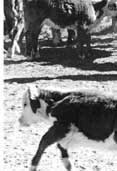 |
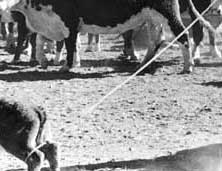 |
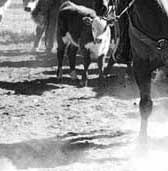 |
 |
 |
 |
 |
 |
|
The CS Ranch straddles the Cimarron cutoff of the old Santa Fe trail. Linda Mitchell Davis has lived here, on New Mexico’s largest family-operated ranch, for almost 50 years. She was raised on the Tecosquite Ranch at Albert, N.M., established by her great-grandfather in 1878.
In 1930, Linda’s dad Albert K. Mitchell started running the Bell Ranch in addition to Tecosquite. In 1934, Linda’s mother died and Linda began spending a lot of her time with the Bell Ranch wagon crew. They taught her to read, she says, although they got “very tired” of reading Peter Rabbit. “I’ve always had a very affectionate spot in my heart for any true wagon crews for they were very patient with this little girl. I enjoyed them. They were great guys, the best babysitters a young person could have. In the early spring when the bronc busters started breaking horses, they’d take me along and sit me on the fence. They’d just get a horse topped off real good, you know, then come by the fence and grab me and sit me right in front of them in the saddle and hold me with one hand. Oh, they were bronc breakin’ rascals in those days. And I used to think: ‘Whoopee, that was great!’” Her father always took her with him. “As the oldest I reaped the benefit not only of being his friend but also his confidante. And I had the advantage of being a girl.” While Linda’s ancestors were settling the Tecosquite Ranch, famed territorial lawyer and paleontologist Frank Springer began in 1873 to accumulate the land that would eventually make up the 250,000-acre family-owned-and-operated CS ranch. Springer’s brother Charles, one of the early managers, had his initials recorded as the ranch brand in 1880. In 1941, CS owner Ed Springer brought his nephew Les Davis, a recent Dartmouth pre-med graduate, to meet Albert Mitchell and “see how a real outfit is run.” There Les met young Linda. That day, Linda recalls, |
|
Above: The cowhand and her companions, a good horse and a faithful dog. Right: Linda and her late husband, Les. She was only 11 when they met, “and he didn’t remember me.” They were married when she was 23. |
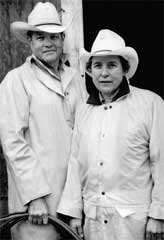
|
| “Dad told me to gather certain cattle and take them to the ranch headquarters, and he said, ‘I want a good dinner, too.’ So I gathered the cattle, cooked dinner, and did everything else, too. I never forgot Les,” she says with a smile, “even though I was only 11 and he was a debonair 22. Les doesn’t even remember!” They married in 1953. |
 |
|
Linda Davis holds CS Ranch calves and cows so they can “mother up” after branding. |
| Ranch headquarters lie along the Cimarron River, which cuts through a green, grassy plain reaching out from the base of the Sangre de Cristo Mountains. It is good grass country. It was also a good place to raise their six children who now own and work the ranch.
Daughter Julia Stafford echoes her parents’ love of the land. “Ranching is such a different way of life that it is almost impossible to describe. How do we explain the whole kind of openness and freedom that we have? How do I explain to somebody that, no, I don’t get bored or lonely, nor am I frightened about being ‘out there’ all alone. The pull, the lure, the attraction, the sense of responsibility for the ranch will always be with me no matter who I’m with or where I am.” Keeping the ranching tradition together is important to the family. Sharing responsibility is another quality passed along from Linda and Les. |
|||||||||
|
|||||||||
|
Time to relax after a hard day on the CS Ranch. Keeping the ranching tradition together is important to the family. |
|||||||||
|
“Les was the businessman,” Linda says. “I’m the cattlewoman. I was raised in the saddle so I have no excuse not to be a good cowboy. And I think that the fact that I was raised around the Spanish people and their old-time families who had worked and lived on the ranch for generations made me work harder at being a real go-getter and top-notch hand. But it was sad to see how those old Spanish families would react when the oldest child was a girl. They would shake their heads and say, ‘Too bad, because she likes it.’ But I was a girl, the oldest, and I had a natural aptitude.” |
|||||||||
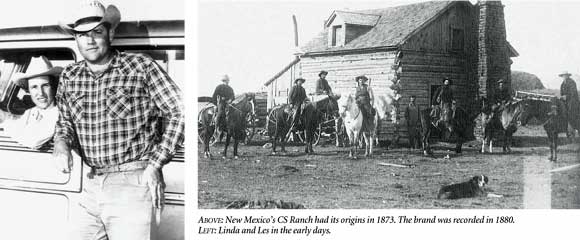 |
|||||||||
|
She was a tomboy, too, and got to go with the men “if I behaved myself and didn’t scream or wail. The net result was that I probably turned out to be more of a stoic because I was the only girl and I wanted to go with the men. I’m not afraid of snakes and such. Of course, if you’re a girl, you always know that you can ride but you have to cook, too! I remember hearing so often as a youngster at the Bell Ranch, ‘Well, Linda’s along, so she can fix the white shirts for Saturday night.’” Excerpted from “Hard Twist, Western Ranch Women,” by Barbara Van Cleve, Museum of New Mexico Press. See order form in magazine on page 40 or click here for fax-in form. |
|
Spring 2003 Contents To Subscribe: Please click here or call 1-800-RANGE-4-U for a special web price Copyright © 1998-2005 RANGE magazine For problems or questions regarding this site, please contact Dolphin Enterprises. last page update: 03.29.05 |
|||

